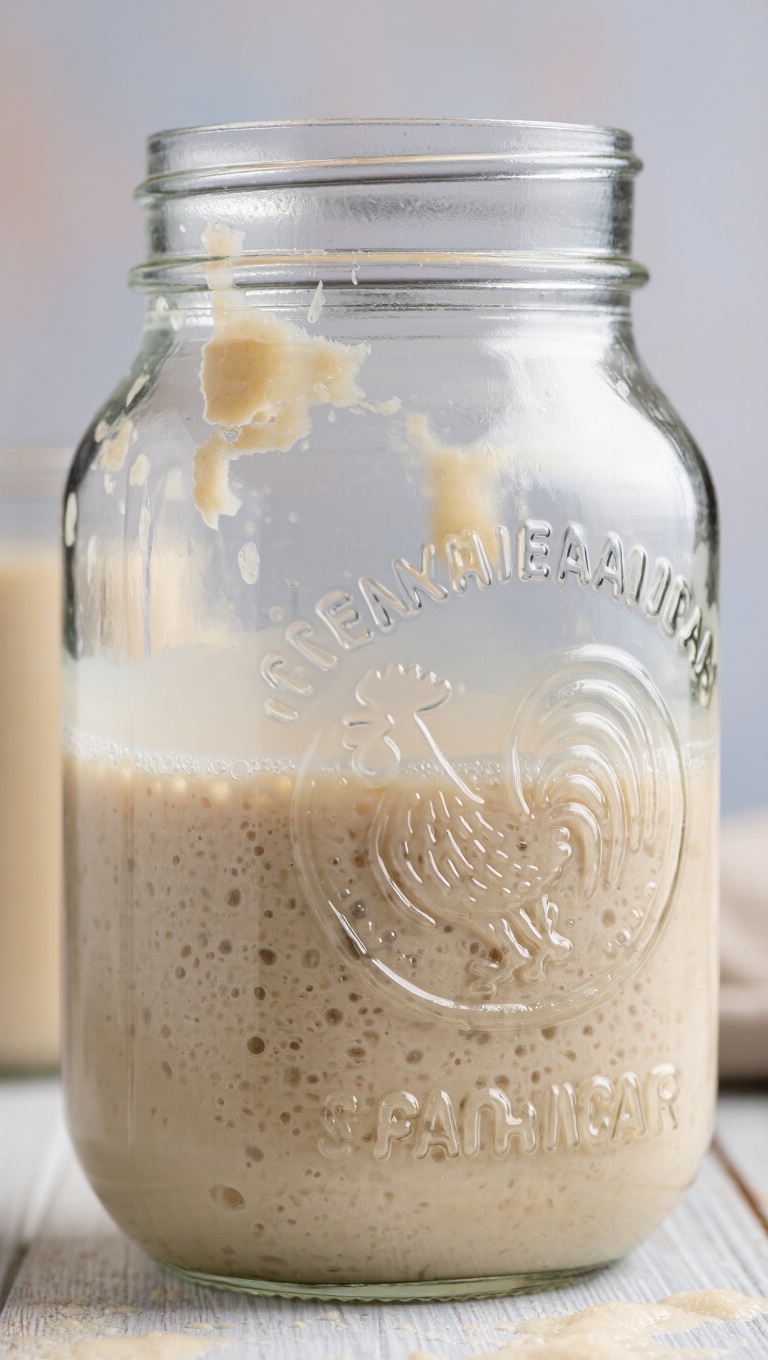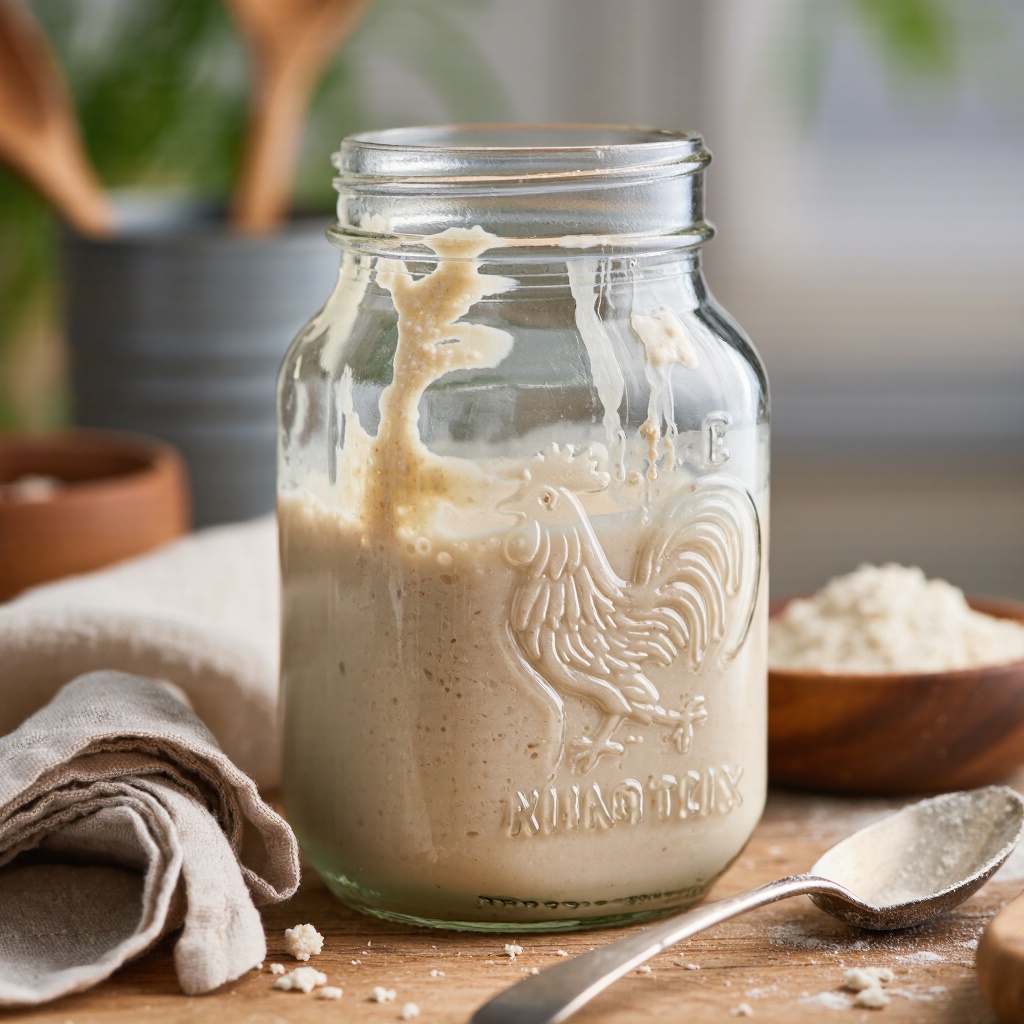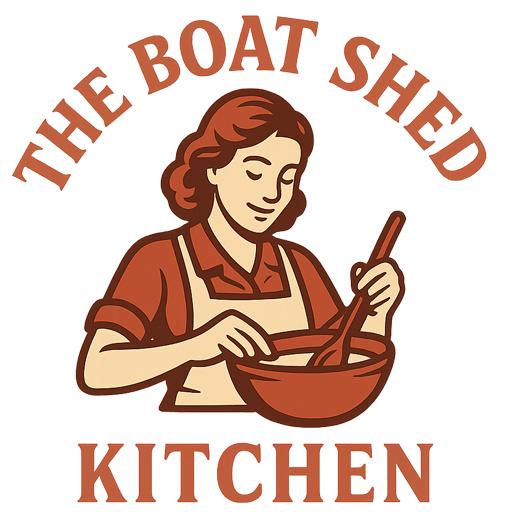A homemade sourdough starter is the heart of every great sourdough bread recipe.
With just flour, water, and a little patience, you can create a natural yeast culture that will bring flavor and texture to your baking.
Why You’ll Love This Recipe
Requires only two basic ingredients—flour and water.
No commercial yeast needed; it develops naturally.
Can be maintained for years with proper feeding.
Gives bread a tangy flavor and chewy texture.
What You’ll Need (Ingredient Highlights)
Whole wheat or unbleached all-purpose flour for the initial starter.
Water at about 75°F for optimal fermentation.
A glass jar or bowl (about 32 ounces) to hold the starter.
Paper towel and rubber band for breathable covering.
Pro Tips Before You Start
Use non-chlorinated water if possible to encourage healthy yeast growth.
Keep the starter in a warm spot (70–75°F) to speed fermentation.
Consistency should be like pancake batter—adjust water as needed.
Always stir with a wooden spoon to avoid unwanted reactions.

How to Make Sourdough Starter
Step 1 – Begin the starter
Combine flour and water in a jar until you reach a pancake batter consistency.
Let rest briefly, then stir and set aside until the first feeding.
Step 2 – First feeding
After about a day, check for bubbles. If present, stir in more flour and water until smooth.
If no bubbles, stir and let sit another day before feeding.
Step 3 – Second feeding
When bubbles appear, discard half of the starter.
Add fresh flour and water, stir thoroughly, and leave at room temperature.
Step 4 – Third feeding
Again, discard half the starter and add fresh flour and water.
Stir and rest for another day.
Step 5 – Additional feedings
From day 4 onward, you can feed once or twice daily if you plan to use it soon.
Continue until the starter bubbles and doubles in size within 8 hours of feeding.
Step 6 – Maintenance
Once active, store in the refrigerator and feed weekly.
Before baking, bring to room temperature, feed, and allow it to rise and bubble.
What to Serve Them With
Use to make sourdough bread, pancakes, pizza dough, or crackers.
Great for rustic loaves, artisan rolls, and baguettes.
Variations / Substitutions
Start with rye flour for a deeper, earthier flavor.
Use bread flour after day 2 for a stronger gluten structure.
Storage & Leftovers
Store active starter in the refrigerator between uses.
Feed weekly to keep the culture strong.
If left at room temperature, feed daily.
FAQs
Why isn’t my starter bubbling?
It may be too cold—move it to a warmer spot and continue feeding.
Can I use tap water?
Yes, if it’s not heavily chlorinated; filtered water works best.
What does it mean to “discard” half the starter?
It keeps the starter at a manageable size and ensures yeast has enough fresh food.
Can I skip a feeding?
If refrigerated, yes—just feed weekly. At room temperature, daily feedings are best.
When can I bake with it?
Once it doubles in size within 8 hours of feeding and has a pleasant, slightly tangy smell.
Can I revive a neglected starter?
Yes, with consistent feedings over several days.

Final Thoughts
A sourdough starter is an investment of time that rewards you with better bread for years to come.
Once you establish and care for your starter, you’ll have a ready source of natural leavening anytime you want to bake.

Sourdough Starter
Method
- Mix flour and water in a jar to pancake batter consistency.
- Rest 30 minutes, stir, and set aside.
- After 24 hours, if bubbles appear, add more flour and water.
- If no bubbles, stir and wait another 24 hours.
- Once bubbly, discard half the starter. Add fresh flour and water, stir, and rest 24 hours.
- Repeat: discard half, feed, and rest 24 hours.
- On days 4–6, feed once or twice daily until starter doubles within 8 hours.
- See full steps with tips & photos → https://theboatshedcafe.com/sourdough-starter/
Notes
- Whole wheat flour helps jumpstart fermentation faster.
- Water should be lukewarm to encourage yeast activity.
- Discarded starter can be used in pancakes, crackers, or muffins to avoid waste.


 My name is Isabella, and this space was born from years of stirring sauces at sunset, baking cookies while the kids played on the porch, and finding comfort in a homemade meal after long, busy days. Here you’ll find delicious, reliable recipes made with simple ingredients, plus easy step-by-step photos and videos to help you cook confidently at home.
My name is Isabella, and this space was born from years of stirring sauces at sunset, baking cookies while the kids played on the porch, and finding comfort in a homemade meal after long, busy days. Here you’ll find delicious, reliable recipes made with simple ingredients, plus easy step-by-step photos and videos to help you cook confidently at home.